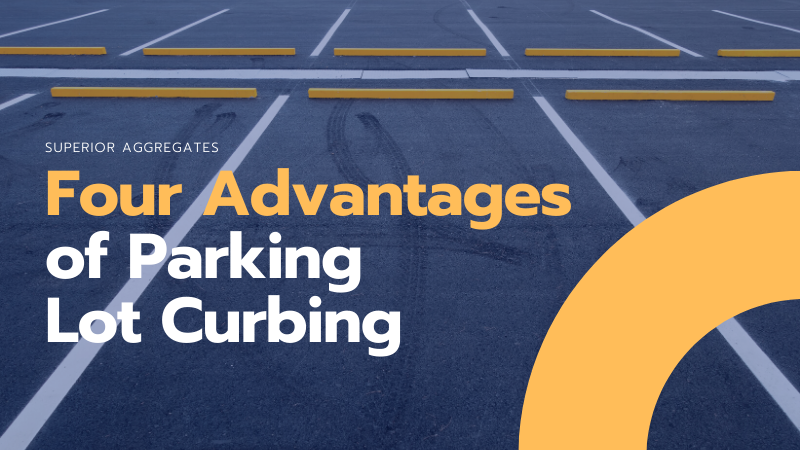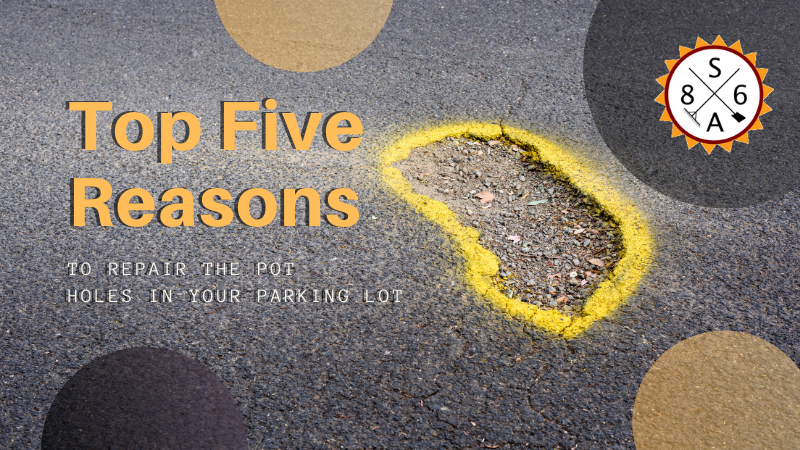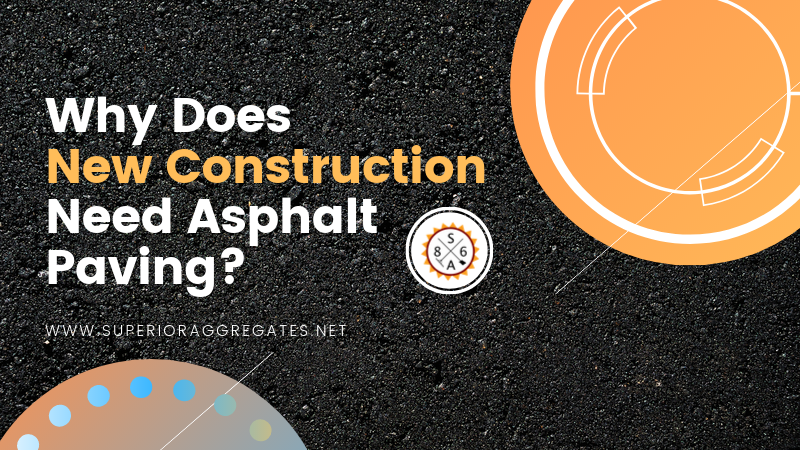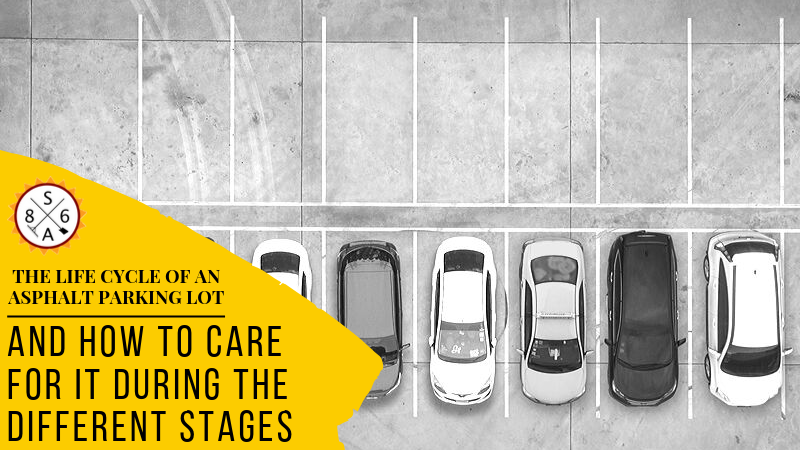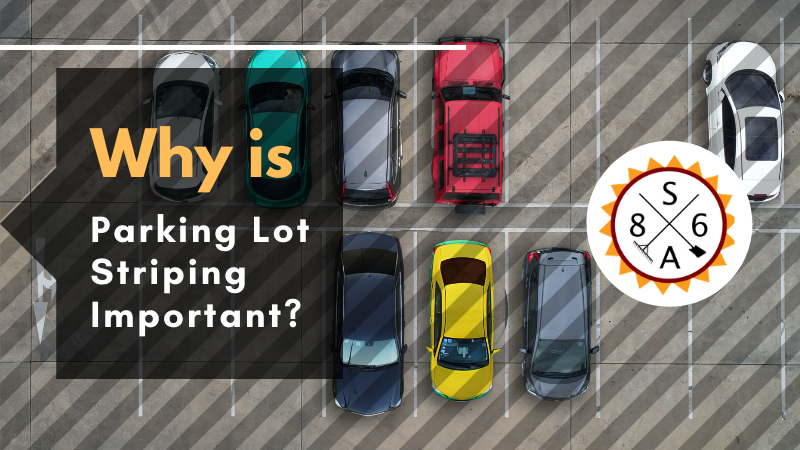
Why is Parking Lot Striping Important?
If you’re like most people, then you spend a lot of time in parking lots. From going to the grocery store to heading to the mall for four hours on a Saturday, we spent a great deal of time in these areas. But while you park, leave your vehicle, then hop back in for the ride home, you probably don’t really think about the different aspects of parking areas and how they work. From the striping to the flow of traffic, there are many aspects that result in a well-functioning and great looking parking area.
In this post, we’ll discuss parking lot striping and talk about five reasons why it’s important.
Safety
Parking lots can be massive with hundreds of spaces crammed into a little area. With so many people walking to and from their vehicles—not to mention the hundreds of cars leaving and coming in at the same time—staying safe can be a tough task. That’s were parking lot striping comes in. This striping helps to label pedestrian areas in order for drivers to know to stay clear of these locations. In addition, striping on parking lot paving can help to improve the flow of traffic. From angled parking spaces to arrows that label the direction of traffic, this striping helps the parking lot function properly to limit accidents and other complications.
Handicap Access
Another reason why striping on parking lot paving is so important is that it gives proper access to handicapped individuals. Some parking lots don’t clearly label these areas, which could lead to others parking in these reserved spaces. In order to provide access for these handicap individuals, parking lot striping makes it easy. This striping can help drivers and pedestrians clearly see these parking spaces to ensure the right individuals park there.
Appearance
Have you ever noticed a parking lot that was just recently completed or one that was just repainted? If so, then you probably noticed how great it looked. That being said, another benefit of parking lot striping relates to the curb appeal. In fact, this can be a deciding factor for a customer to walk into your store or not. In addition, it’s vital to routinely re-paint your parking lot to give off a great impression and welcome customers into your store.
Guides Traffic
One of the more beneficial purposes of striping is to properly direct traffic. Given how some parking lots can fit hundreds of cars, it’s important to have the right traffic guidance in place—including freshly painted striping that clearly marks parking lot spaces, the direction of traffic, walking paths, and more.
Maximizes Parking Area
Another reason striping is vital for parking lots is because it helps to maximize the parking area. If you have faded striping or no striping at all, this can make it confusing for drivers, which could lead to an ineffective flow of traffic and a lot of wasted space. That being said, it’s best to strategize where to place your parking spaces, then ensure that the striping is done appropriately.
Striping Does it All
From helping businesses get customers in the door to providing safety for those customers, parking lot striping is probably more important than you thought. So the next time you head to the grocery store or bank, take a look at the parking lot striping and think about how important it really is.
If you’re like most people, then you spend a lot of time in parking lots. From going to the grocery store to heading to the mall for four hours on a Saturday, we spent a great deal of time in these areas. But while you park, leave your vehicle, then hop back in for the ride home, you probably don’t really think about the different aspects of parking areas and how they work. From the striping to the flow of traffic, there are many aspects that result in a well-functioning and great looking parking area.
In this post, we’ll discuss parking lot striping and talk about five reasons why it’s important.
Safety
Parking lots can be massive with hundreds of spaces crammed into a little area. With so many people walking to and from their vehicles—not to mention the hundreds of cars leaving and coming in at the same time—staying safe can be a tough task. That’s were parking lot striping comes in. This striping helps to label pedestrian areas in order for drivers to know to stay clear of these locations. In addition, striping on parking lot paving can help to improve the flow of traffic. From angled parking spaces to arrows that label the direction of traffic, this striping helps the parking lot function properly to limit accidents and other complications.
Handicap Access
Another reason why striping on parking lot paving is so important is that it gives proper access to handicapped individuals. Some parking lots don’t clearly label these areas, which could lead to others parking in these reserved spaces. In order to provide access for these handicap individuals, parking lot striping makes it easy. This striping can help drivers and pedestrians clearly see these parking spaces to ensure the right individuals park there.
Appearance
Have you ever noticed a parking lot that was just recently completed or one that was just repainted? If so, then you probably noticed how great it looked. That being said, another benefit of parking lot striping relates to the curb appeal. In fact, this can be a deciding factor for a customer to walk into your store or not. In addition, it’s vital to routinely re-paint your parking lot to give off a great impression and welcome customers into your store.
Guides Traffic
One of the more beneficial purposes of striping is to properly direct traffic. Given how some parking lots can fit hundreds of cars, it’s important to have the right traffic guidance in place—including freshly painted striping that clearly marks parking lot spaces, the direction of traffic, walking paths, and more.
Maximizes Parking Area
Another reason striping is vital for parking lots is because it helps to maximize the parking area. If you have faded striping or no striping at all, this can make it confusing for drivers, which could lead to an ineffective flow of traffic and a lot of wasted space. That being said, it’s best to strategize where to place your parking spaces, then ensure that the striping is done appropriately.
Striping Does it All
From helping businesses get customers in the door to providing safety for those customers, parking lot striping is probably more important than you thought. So the next time you head to the grocery store or bank, take a look at the parking lot striping and think about how important it really is.

